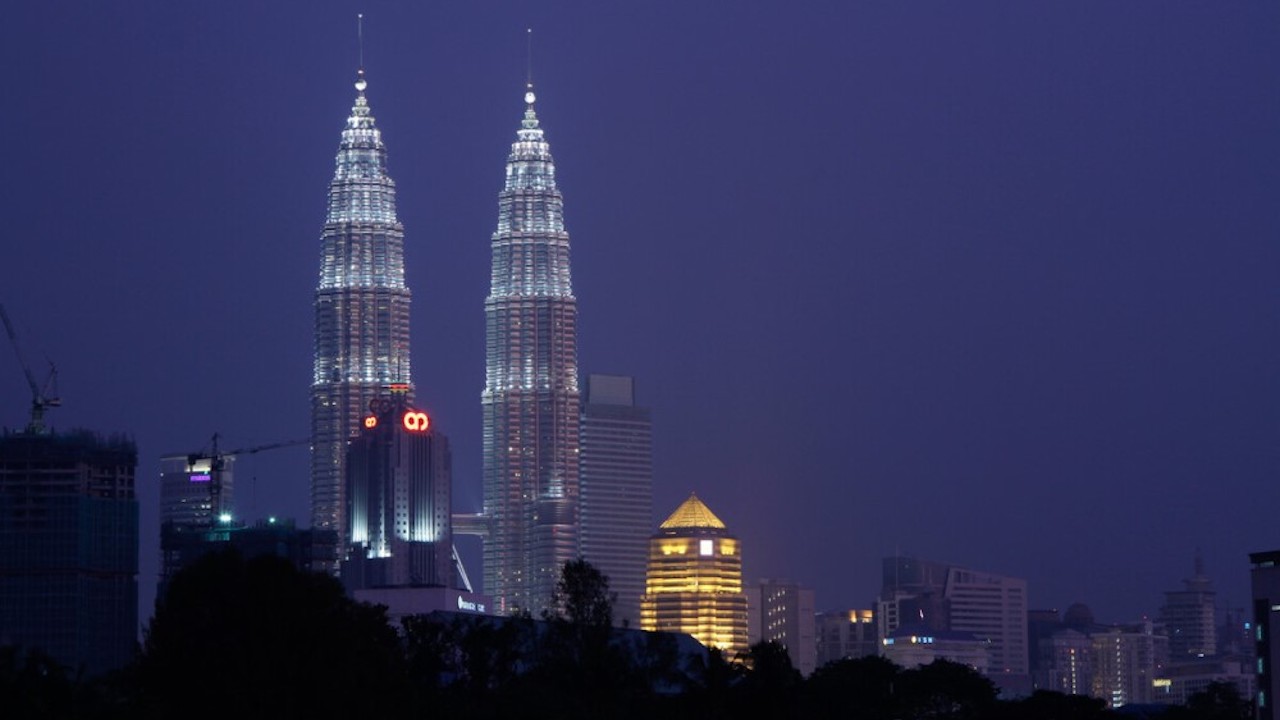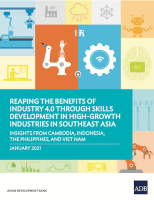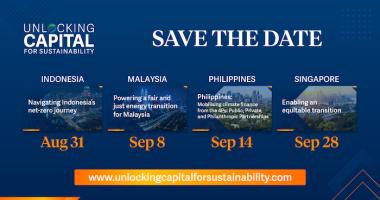Exploring Opportunities for Clean Growth in Malaysia

Associate, Arup

Associate Principal, Arup

By 2030, Malaysia aims to achieve its target of reducing carbon intensity against GDP by 45% compared with 2005 levels. Photo credit: ADB.
The Clean Growth Handbook Malaysia identifies opportunities to introduce or scale clean growth in four priority sectors—power, transport, buildings, and manufacturing.
This article is published in collaboration with Arup.
Malaysia is emerging as a promising arena for clean growth and sustainable development in a world increasingly focused on sustainability. The concept of clean growth relates to growing national income while reducing greenhouse gas (GHG) emissions and is a challenge for the country where, over the past 30 years, the gross domestic product (GDP) has increased by 389%, while GHG emissions have risen by 289% in the same period. By 2030, Malaysia aims to achieve its target of reducing carbon intensity against GDP by 45% compared with 2005 levels and to achieve an average of 4.7% real GDP growth annually at constant prices.
The United Kingdom Foreign, Commonwealth & Development Office (FCDO) has worked with the Malaysian public and private sectors in recent years to help accelerate climate action in the country. The FCDO and the Department for Business and Trade commissioned Arup to develop the Clean Growth Handbook Malaysia to build on these initiatives and help reshape the landscape of sustainable development in the country, supporting Malaysia’s long-term aspiration to be a net-zero country.
The UK is one of more than 30 countries across the globe to have demonstrated that it is possible to decarbonize while growing national income.
Critical sectors for clean growth
The handbook highlights opportunities to introduce or scale clean growth in Malaysia. It also identifies 40 collaboration prospects between Malaysia and the UK across four priority sectors—power, transport, buildings, and manufacturing. These sectors have the ability to enact large-scale change, as they are those with higher GHG emissions and gross added value contributions to the economy.
Power contributes to around 42% of total GHG emissions in Malaysia, making it a clear priority area for the country’s clean growth journey. Of this, close to one third of emissions can be attributed to buildings, based on global data. With Malaysia targeting an urbanization rate increase to 85% by 2040 from 75% in 2020, this is likely to see an increase in the number of buildings developed to accommodate additional live, work, and play capacity.
Approximately 21% of total GHG emissions comes from transportation fuel use, with only 20% of journeys made by public transport. With Malaysia’s population set to increase by 11% by 2030 and expected growth in passenger car sales, this shows the importance of focusing on transport as a clean growth priority. Finally, 19% of emissions comes from fuel use and the non-energy use of fossil fuels in industrial activities.
This is the first time four economic sectors have been examined in a single document at the national level in regard to clean growth. The handbook provides market overviews before listing clean growth opportunities for Malaysia within each sector that UK companies could support.
Growth opportunities
To develop clean growth, an ecosystem of stakeholders within and outside the country is required to collaborate. Arup engaged 46 stakeholders in Malaysia and the UK to gain market insights on Malaysia’s clean growth.
Power: Malaysia is retiring commercially unviable coal power plants, while the UK is retrofitting coal plants for renewable energy opportunities. Together, both countries can collaborate on retrofitting coal power plants for renewable and transition fuels. There is also the prospect of producing green hydrogen and implementing carbon capture, usage and storage (CCUS) projects that could make use of the knowledge created from the UK’s experience.
Transport: The UK brings experience in integrated transport planning to support the uptake of public transport use, the development of vehicle charging networks, and innovations in multifuel stations to power hydrogen and electric logistics fleets.
Buildings: Green building certification is gaining traction due to increasing tenant demands and available tax incentives. The concept of zero-energy buildings is on the rise, as is the adoption of low-carbon building materials as embodied carbon becomes an increased focus. Malaysia can look to the UK’s regulations and guidelines for low-carbon architecture and to help deliver low-carbon buildings.
Manufacturing: Increased energy costs are driving manufacturers to adopt more energy-efficiency measures. The UK brings experience in industrial thermal energy audits and developing circular business models that can be tapped into to provide improvements in this area.
Clean growth enablers
Using the enabling framework from Arup’s Global Green Economy report, the handbook identifies nine enablers of clean growth in Malaysia across three categories—directive, business case, and implementation enablers.
The directive enablers set the direction and basis for interoperability, covering governance, policy and regulation, and standards; business case enablers that support the commercial case for adapting clean growth cover data and infrastructure, market incentives, and technology and innovation; and implementation enablers that include practical elements required for successful delivery cover funding and financing, capabilities, and collaboration.
The handbook lays out key findings related to each enabler, which can support the uptake of clean growth in Malaysia:
1. Governance: Develop an integrated transport planning strategy that clearly lays out the roles and responsibilities of different stakeholders. Adopt an approach to national and local governance for implementing district cooling systems.
2. Policies and regulations: Develop a unified clean or green growth strategy to set a shared ambition for sectors and stakeholders across the country. Develop an integrated transport planning strategy that integrates public, private, active and autonomous modes. Update the Uniform Building by-laws to include minimum low carbon requirements and develop and introduce Environmental Product Declaration requirements to the market.
3. Standards: Establish stringent standards on heavy or polluting vehicles entering cities or low-emission zones and integration of embodied carbon in green building certifications.
4. Data and infrastructure: Develop and introduce battery energy storage systems (BESS) before 2030 to accelerate renewable energy adoption and support local government in active mobility planning.
5. Market incentives: Introduce additional funding for green technology and develop an equitable electricity tariff framework.
6. Technology and innovation: Adopt technology to mitigate the effect of renewable energy fluctuations on grid stability and adopt industrialized building systems and timber construction.
7. Funding and financing: Develop a net-zero carbon funding and financing strategy for identified low-carbon implementation measures.
8. Capabilities: Develop knowledge-sharing initiatives for maintenance of renewable energy facilities. Introduce training on carbon emissions modelling to support states and cities developing emissions reduction targets, on whole-life carbon assessments for buildings, and on product life cycle assessments and environmental product declarations. Develop higher education syllabus to include holistic transport planning.
9. Collaboration: Develop a strategy to support the low-carbon startup ecosystem. Sector collaboration opportunities were also set out in the handbook based on each relevant priority sector across five emerging themes of UK–Malaysia collaboration:
- Scaling infrastructure development,
- Design and engineering services,
- Setting governance and standards,
- Adopting technology and innovation, and
- Tools and data platforms.
Proactive steps
As the world grapples with the urgent need for decarbonization, Malaysia stands as a shining example of a nation that is taking proactive steps to address this challenge.
At the heart of the handbook is a vision that transcends short-term economic gains and aspires to create a more equitable, sustainable, and prosperous future for all Malaysians. It envisions an economy characterized by reduced carbon emissions, increased energy efficiency, and enhanced environmental stewardship. It seeks to work in harmony with the country’s abundant natural resources and use human capital to drive innovation, create new industries, and foster economic resilience.
In the years ahead, the successful implementation of the Clean Growth Handbook looks set to yield economic, environmental and social dividends, setting a path toward a prosperous and sustainable future for all.
This article was adapted from Issue 2 2023 of The Arup Journal.

Devni Acharya
Associate, ArupDevni Acharya leads Arup’s Sustainability Strategy & Insights work in Southeast Asia. She has wide-ranging experience advising investors, developers and governments on how they can benefit from sustainable development by adopting low carbon, resilient and circular economy approaches. Most recently, she led the Clean Growth Handbook Malaysia commissioned by the United Kingdom Foreign, Commonwealth and Development Office and the Department for Business and Trade.

Murali Ram
Associate Principal, ArupMurali Ram manages the Cities & Advisory practice at Arup in Malaysia. He acts as a sustainability advisor to urban actors and is the lead author of the publication Creating Future-Proof Cities: How to Navigate the Climate Crisis. He has a wealth of experience in crafting urban strategies for social and environmental impact and seeing to their successful implementation.

Arup
Arup is a global collective of designers, consultants, and experts dedicated to sustainable development and to using imagination, technology, and rigor to shape a better world.

